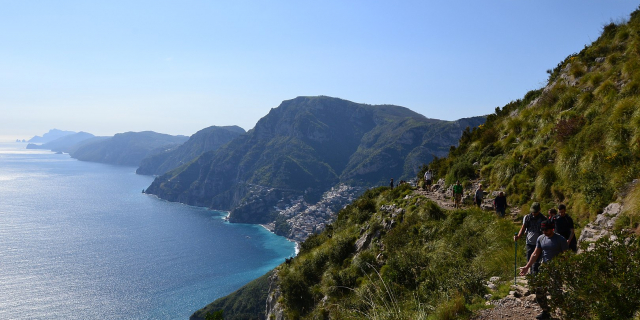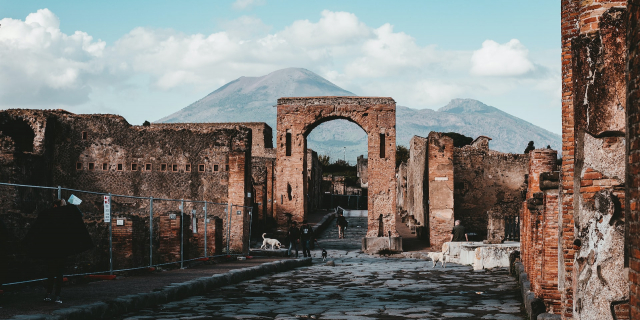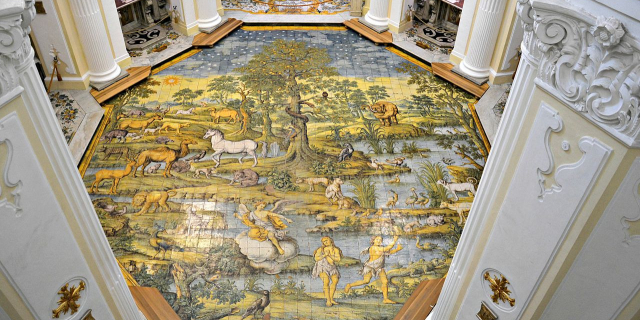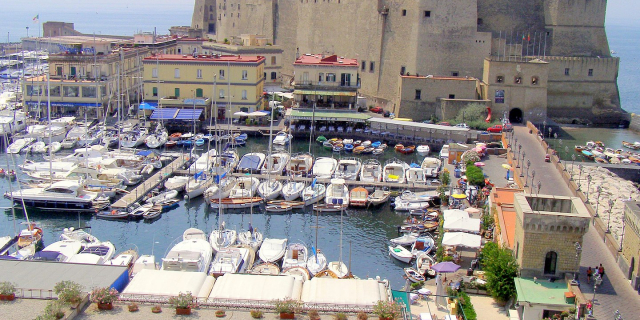Atrani is a city and comune on the Amalfi Coast in the province of Salerno in the Campania region of south-western Italy. It is located to the east of Amalfi, several minutes drive down the coast.
The municipality of Atrani has a surface area 0.12 km2, making it the smallest in Italy. Population was 832 in 2020. It is one of I Borghi più belli d'Italia ("The most beautiful villages of Italy").
The origins of Atrani are still unknown. Archeological research discovered ruins remaining from the 1st century AD. Roman villas existed along the Amalfi Coast and were covered in debris from the eruption of Vesuvius in 79 AD. The debris was deposited on the mountains encircling Atrani and from there it was dumped into the valley. In the 5th century AD, barbarians attacked and numerous Romans escaped from the cities. They fled onto Monti Lattari and created stable settlements. The first documented proof of the existence of Atrani is represented by a letter by the Pope Gregory I to Bishop Pimenio of Amalfi dated 596 AD.[citation needed]
Duchy of AmalfiThe Duchy of Amalfi extended from Positano to Cetara and also included Agerola, Pimonte, Lettere, Capri and the archipelago of Sirenuse (Li Galli). Within this territory Atrani was a village that boasted the title of city, the twin city of Amalfi was seat of the aristocracy. The Pantaleoni, the richest and most powerful family of Amalfi, the Alagno, the Mauro Comite, the Comite Iane, the Augustariccio, and the Viarecta families resided there. Its inhabitants preserved their identity as Atranese (from Atrani), unlike all the other inhabitants of the duchy, who were merely called Amalfitani.[citation needed]
Only Amalfi and Atrani had the right to elect or depose the leaders of the towns. Amalfi was first ruled by counts, then by prefects, judges, and then finally by the Dukes (not doges, as is sometimes erroneously said). The Duke concentrated in his person both civil and military power. The symbol of his power was a hat, the "birecto", which the dukes were awarded in a coronation in the palatine chapel of S. Salvatore de Birecto of Atrani.[citation needed]
The village of Atrani was more extensive than its current borders and protected by massive fortifications. It extended as far as Castiglione (now part of the municipality of Ravello), and was so named from the castellio, which was a large castle situated on the promontory where the collegiate church of St. Mary Magdalene stands today. In the Civita area there was the Castle of Supramonte, which was destroyed by attacks by the Republic of Pisa between 1135 and 1137. There was also the coastal tower of "Tumulo" or "San Francisco", built in 500[citation needed] by Don Parafan de Ribera to defend against the Turks who, after the defeat of the Christian fleet at Djerba near Tunis in 1560, would eventually overrun the coast.[citation needed]
Atrani contributed to the economic and social development of the duchy. Atrani had prosperous pasta and fabric factories that produced sajette and precious fabrics. This commerce made Atrani the pride of the coast. They were particularly active east of the duchy, in Paestum, Cava de' Tirreni and Vietri sul Mare. Atrani's economic success saw it plagued by many raids by the Republic of Pisa in the 12th century.
In 987 Amalfi was promoted to the rank of archdiocese by Pope John XV. The first archbishop Leone di Sergio di Urso Comite, who was from Atrani. Atrani was had a flourishing religious life, with about three hundred churches and chapels in the city. Monte Maggiore (now Mount Aureo) housed six monasteries, the oldest of the region.[citation needed]
In the second half of 1100, Manfredi punished Atrani for siding in favour of the pope in the struggle between the papacy and the empire and sent 1000 Alexandrian sailors against Atrani. The inhabitants of Atrani fled to Amalfi, and the mercenaries settled in the village, and it would be many years before they abandoned it. The departure of the mercenaries is attributed to the intercession of St. Mary Magdalene. Small traces of the occupation still remain today, in the cadence of the local dialect and a handful of words.[citation needed]
The Earthquake of 1343 struck the Tyrrhenian Sea, and the resultant tsunami ravaged the ports along the Amalfi Coast, including Atrani's. The effects of the tsunami were observed by the poet Petrarch, whose ship was forced to return to port, and recorded in the fifth book of his Epistolae familiares.[1] In the years that followed, Atrani's fortunes were tied to those of Amalfi, whose duchy had fallen and been incorporated into the Principality of Salerno.[citation needed]
Modern eraIn 1647, Masaniello, instigator of an uprising in Naples against Spanish control, was hunted by soldiers of the Duke of Arcos, the Viceroy of Naples. He returned to Atrani to hide in what has since been called the 'Cave of Masaniello', a cave not far from the hero's mother's house. Born in Naples in 1620, Masaniello, whose full name was Tommaso Aniello d'Amalfi, was the son of Francis of Amalfi and Antonia Gargano of Atrani. He was a fishmonger, but was known in the Piazza del Mercato in Naples for his skill as a smuggler.[citation needed]
The Neapolitan Republic or 'Royal Republic' (Italian: Real Repubblica) was proclaimed under the protection of France and Masaniello was acclaimed as "Captain-General of the Neapolitan People." The power went to his head and he fell into a series of excesses that made him unpopular with the people. On July 16, 1647, he was killed. The Neapolitan Republic lasted until the following April, when it succumbed to the Spanish.[citation needed]
In 1643 the Great Plague killed many Atranese. On 22 June 1807, Joseph Bonaparte, King of Naples, went on an official visit to the Amalfi Coast. Struck by the beauty of the place in Amalfi and Atrani in particular, he promised to build a road that would make it easier to access the Kingdom of the Amalfi. This road, begun by Joachim Murat in 1816, was only completed in 1854.[citation needed]
Floods The beach in Atrani after the flood of 2010.
The beach in Atrani after the flood of 2010.On 10 September 2010 the Dragone burst its banks following a flood and overflowed along the main street of the city. The river was full of mud and carried away in its path. A girl named Francesca Mansi died. Her body was found months later near the Aeolian Islands.[citation needed]


































Add new comment